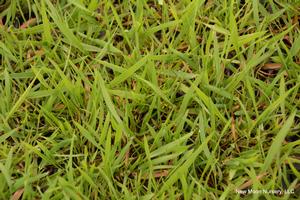Printed at http://www.newmoonnursery.com/index.cfm/
Elymus hystrix
Bottlebrush grass
Native to North America
FIRST IMPRESSIONS: Elymus hystrix is a clump forming cool season perennial grass. Plants form loose upright tufts of rough textured bright green blades. In summer pale green bottlebrush like inflorescences are displayed above the foliage. As seed matures the attractive spikelets develop a straw color. This is among the most shade tolerant native grasses. Plants thrive in part sun, part shade or shade and moist, average or dry soil.
HABITAT & HARDINESS: Elymus hystrix occurs from Manitoba to Nova Scotia and south from Maine to Georgia and west to North Dakota and Oklahoma.
This species is indigenous to fairly high quality woodlands and nearby sites including dry upland woods, mesic deciduous woods, woodland clearings and edges, shaded meadows, glade margins, savannas, rocky glades, margins of wetland forests, shaded creek and river banks.
This grass is hardy from USDA Zones 2-8.
PLANT DESCRIPTION: Elymus hystrix is a lanky cool season bunchgrass with a narrow open habit. Plants often reseed to form small colonies.
The arching leaves are linear with ½” width and up to 12” length. They are usually smooth and can vary from grayish green to dark green. The basal foliage clump is open and up to 3’ tall.
Sturdy leafy stalks rise from above the foliage supporting pale green spike-like racemes. Each 8” raceme consists of many widely spaced spikelets tipped by bristly awns.
The inflorescences mature into tan or brown prickly seed clusters. The flower and fruit display is striking in summer or early autumn.
Plants attain 3-5’ height with 1-2’ spread.
CULTURAL & MAINTENANCE NEEDS: Elymus hystrix prospers in partly shaded sites with moist soils. This grass will tolerate difficult dry shade and will take some sun if moisture is present.
Plants endure drought, heavy clay and alkaline pH.
Like other cool season grasses, this species greens up early and grows mostly in spring & early summer. In garden situations, old foliage and seed stalks can be cut to the ground in late winter before this new growth begins.
This species often self-seeds especially in gardens with good growing conditions.
LANDSCAPE USES: Elymus hystrix has two claims to fame – the delightful bottlebrush shaped inflorescences and an unusual shade tolerance for a grass. These traits allow this species to serves as an Accent, Grouping or Mass for the Shade Garden. Plants provide Erosion Control, Cut Flowers and offer Showy Flowers and Attractive Seedheads. This species is appropriate for Low Maintenance Plantings, Shaded Meadows, Rain Gardens, Rock Gardens, Restorations of savannas and woodlands and Wildlife Gardens.
COMPANION & UNDERSTUDY PLANTS: Try pairing Elymus hystrix with Aster macrophyllus, Carex radiata, Eupatorium coelestinum, Rudbeckia hirta or Solidago caesia.
If a substitute is needed, Chasmanthium latifolium has coarser texture but similar height and cultural needs.
TRIVIA: The bottlebrush appearance of the inflorescence is unique and it makes Elymus hystrix easy to identify.
Plants provide grain-like seed to birds and small rodents. Grazing animals feed on the foliage early in the season. Later in the year, the bristly flowers can cause injury to browsers. Seed heads can also become infested with the fungus ergot which is toxic to livestock. Caterpillars of Northern Pearly Eye butterfly feed on the foliage.
In older scientific writings, this species is known as Hystrix patula.
Height:
3-5 ftSpread:
1-2 ftUSDA Hardiness Zone:
2-8Bloom Color:
Green, TanElymus hystrix Characteristics
Attracts Wildlife
- Songbirds
Attributes
- Naturalizing
- Drought Tolerant
- Dried Flower
- Cut Flower
Exposure
- Full Shade to Partial Shade
Flowering Months
- August
Grass Season
- Cool Season Grass
Juglans nigra Tolerance (Black Walnut)
- Yes
Phytoremediation
- Hydrocarbons
Soil Moisture Preference
- Moist to Dry
Interesting Notes:
For more information on this plant, visit the USDA PLANTS Database: http://plants.usda.gov/java/profile?symbol=elhy

